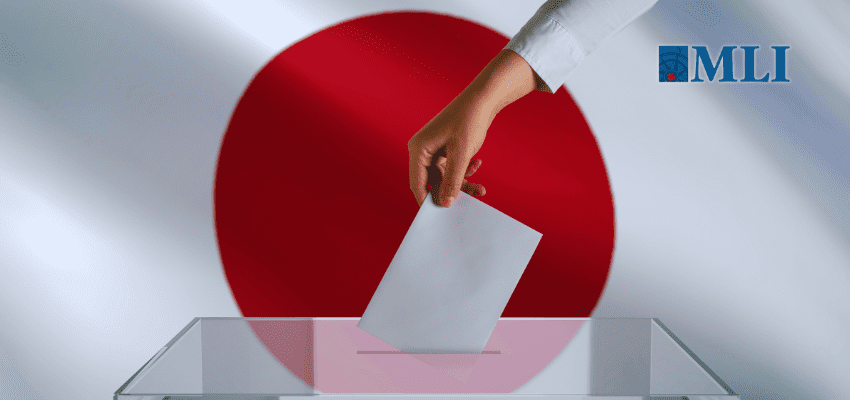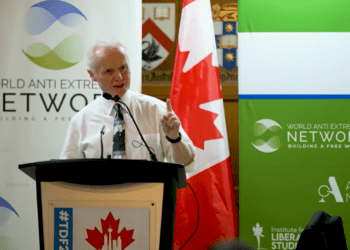This article originally appeared in the Japan Times.
By Stephen Nagy, September 26, 2024
The Liberal Democratic Party of Japan’s presidential election is being closely watched by allies, adversaries and so-called frenemies.
The preferred outcome of the election from the point of view of the U.S., Canada and Australia is very different from China, North Korea and even Southeast Asia.
Which candidates stand out to these various stakeholders, why do they favor them and what will be the implications for regional relations?
Japan’s like-minded partners, with their long-standing relationships, understand that who becomes the nation’s prime minister can be consequential, if not critical to sustaining the rules-based order.
For most of the early 2000s, Japanese prime ministers rotated more frequently than the sushi at a kaiten (conveyor belt) sushi restaurant. Foreign leaders could hardly remember the name of a Japanese prime minister at any given time, let alone their foreign policy priorities.
This changed when Shinzo Abe was reelected prime minister in 2012. The country experienced eight years of sustained, focused and visionary foreign and domestic policy that transformed Japan from an international laggard to an international leader.
Today, the Free and Open Indo-Pacific framework has been adopted and localized by dozens of countries, making it the first Japanese conceptualized foreign policy to be internationalized.
Under Abe, Japan connected Southeast Asian countries to Australia, India, Europe and North America through trade agreements such as the Regional Comprehensive Economic Partnership, the Comprehensive and Progressive Agreement for Trans-Pacific Partnership and the Japan-EU Economic Partnership Agreement. He also pushed the Digital Free Flow with Trust initiative at the Group of 20 meeting in Osaka, along with development partnerships focused on infrastructure and connectivity.
Japan’s allies want a prime minister who will continue this approach to leadership. As such, they do not prioritize youth, inexperience, or populist cultural issues, such as same-sex marriage. They also recognize that leaders without support in the LDP will struggle to navigate the factional politics necessary to implement effective policies.
Among the nation’s allies and friends, there is clarity of thought that an effective Japanese prime minister should have experience as the chairperson of the Policy Research Council, the ability to negotiate among the various factions within the LDP, strong conservative credentials on security issues and values that align with the majority of party members.
Having a proven track record of collaborating and working with major leaders like Abe gives a candidate the political capital needed to be a sustainable prime minister who can lead effectively, rather than be ousted due to intraparty politics. This positions Sanae Takaichi, the minister of state for economic security, as a strong contender for the role to become an effective policy implementer and leader of the LDP, and ultimately, the leader of Japan.
Here lies the conundrum: The leader favored by Japan’s close allies such as the U.S., Canada and Australia may not be the ideal choice for neighboring countries like South Korea.
Progressives in South Korea view candidates like Takaichi as symbols of right-wing conservatism. Whether justified or not, they link her to former Prime Minister Abe’s so-called proactive pacifism, which strengthened Japan’s security stance, as well as to the decision to remove South Korea from Japan’s whitelist of trusted trade partners and the deterioration of relations between Seoul and Tokyo during his time in office.
Electing Takaichi could spell trouble for the revitalized trilateral relationship among South Korea, Japan and the U.S. This relationship has received international praise for its commitment to improving ties among the three nations.
In contrast, North Korea and China would probably prefer that experienced leaders like Takaichi or former Defense Minister Shigeru Ishiba do not win. Instead, they would likely favor the election of the youthful Shinjiro Koizumi, a former minister of the environment. His lack of experience on the international stage, coupled with his youth and academic background would be exploited by these countries to gain an advantage.
Southeast Asia is somewhat of a more nuanced view of who they prefer in terms of the party’s president and eventual prime minister.
In many ways, their views echo other close allies of Japan. They witnessed the sustained leadership under Abe, his engagement with Southeast Asia and the championing of centrality by the Association of Southeast Asian Nations.
The region has benefited from Japan’s overseas development assistance (ODA), foreign direct investment (FDI) and a soft approach to engagement that recognizes ASEAN centrality. The longstanding promotion of intra-ASEAN integration and consistent collaboration with partners in the bloc is crucial not only for countering China but also for sharing common interests in ensuring that maritime spaces remain free, open and governed by international law.
These shared interests serve as the cohesive link between Southeast Asia and Japan. Consequently, the region’s leaders seek continuity in leadership and a sustained Japanese presence in the region through ODA and FDI, along with a soft approach to security.
Southeast Asian countries are hoping for a Japanese leader who will invest in bilateral, minilateral and multilateral relationships within ASEAN and one who is an experienced leader with credibility in the LDP that allows that person to pursue policies that bridge Southeast Asia and Japan. The nation’s allies and friends also desire continuity and a sustained Japanese leadership presence at the prime ministerial, party and intellectual levels.
While Abe was able to establish a framework for effective leadership and engagement, there remain areas for improvement. This includes refining investment strategies in the region, identifying priority partners and working to institutionalize minilateral relationships. For instance, the trilateral partnership among Seoul, Tokyo and Washington., as well as the collaboration between the U.S., the Philippines and Japan, should extend beyond individual leaders and be solidified for sustained cooperation.
Frenemies and adversaries like China, North Korea and potentially Russia would like to see erratic leadership in Japan, along with an inexperienced president who struggles to manage the internal dynamics of the LDP. They likely view ineffective party management as an opportunity. These conditions would hinder Japan’s ability to articulate a clear vision for engaging with the region, building resilience and deterring would-be revisionist powers.
The internal logic of the LDP, rooted in conservative pragmatism, suggests that a youthful, inexperienced leader is unlikely to engage effectively with influential figures from a so-called cartel of chaos. This includes Russian President Vladimir Putin, a former KGB agent and now president for life, China’s termless leader, Xi Jinping, and the third-generation North Korean leader Kim Jong Un, as well as an unpredictable partner from the U.S.
Allies, frenemies and adversaries are viewing the LDP presidential elections through the lens of either continuity in leadership or opportunities to exploit weaknesses. In considering who will be the next LDP president and prime minister, conservative pragmatism, not hope and positivity, will be the determining criteria of who is elected.
Stephen Nagy is a Professor at the Department of Politics and International Studies at the International Christian University and a Senior fellow with the Macdonald-Laurier Institute.






